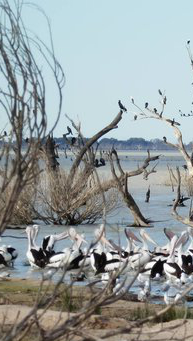Menindee releases loom
 The MDBA has announced water releases to start this week from Menindee Lakes.
The MDBA has announced water releases to start this week from Menindee Lakes.
The Murray–Darling Basin Authority says it will begin releasing a small amount of water from Menindee Lakes in response to recent dry conditions across the southern Basin.
The volume of water in the Menindee Lakes surpassed 640 gigalitres on 7 May, triggering water sharing arrangements agreed between New South Wales, Victoria and South Australia in the Murray–Darling Basin Agreement.
The MDBA can now access water in the lakes on behalf of Basin states until the lakes drop back to 480 gigalitres.
The Authority says it has consulted with the local community in partnership with WaterNSW, and is taking on board feedback on the best way to release the water without impacting landholders and residents.
A peak of around 3,500 megalitres per day will be targeted over the next three weeks.
“We're keeping the daily releases from Menindee relatively small to ensure roads and private river crossings remain open for local landholders and the community,” says MDBA Executive Director of River Management, Andrew Reynolds.
“WaterNSW estimates that between 800 and 1,000 gigalitres will enter the lakes, so the 20 to 30 gigalitres we will be releasing over a three-week period, represents 4 percent of the total volume expected to arrive.”
The lakes are currently 45 per cent full, holding more than 770 gigalitres and rising, with storages increasing by 17,000 megalitres every day on average over the past week.
“As the most significant volume of water to enter the lakes in five years, it's critical that we draw on this water carefully and maximise the benefits to everyone with a stake in this resource,” Mr Reynolds said.
“The releases will start slowly to mimic natural river systems, providing connectivity between the Darling and Murray systems – something that would have occurred to a much larger extent if the water wasn't captured in the Menindee Lakes.
“How we use this water on behalf of Basin state governments, will continue to be shaped by community feedback, while meeting the requirements of the state governments in accordance with the rules of the Murray–Darling Basin Agreement. The lakes continue to be actively managed by WaterNSW.”








 Print
Print